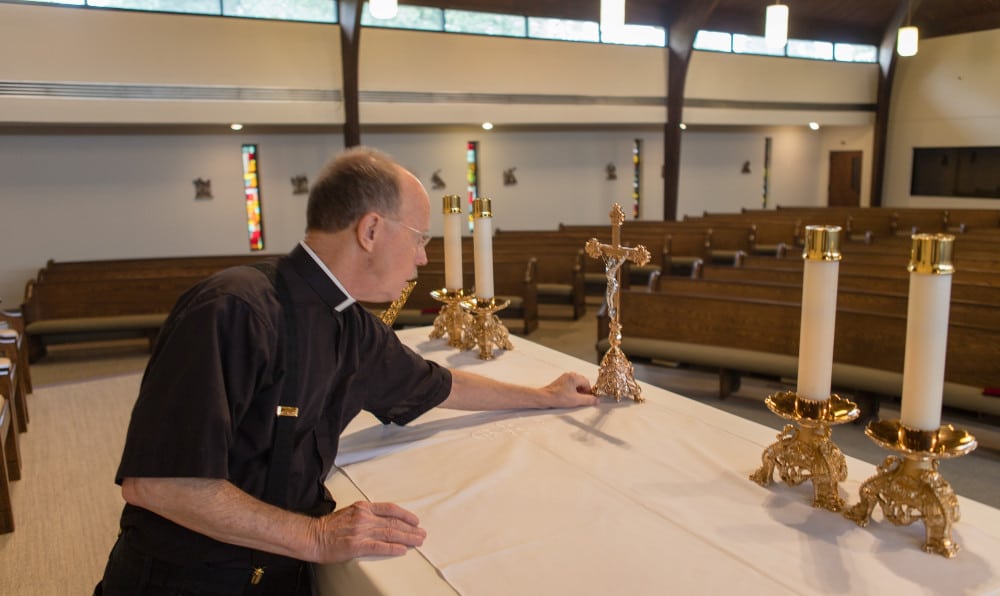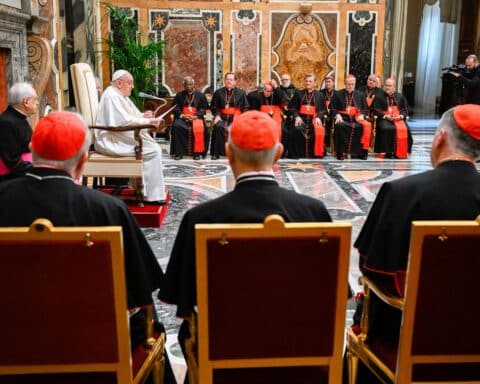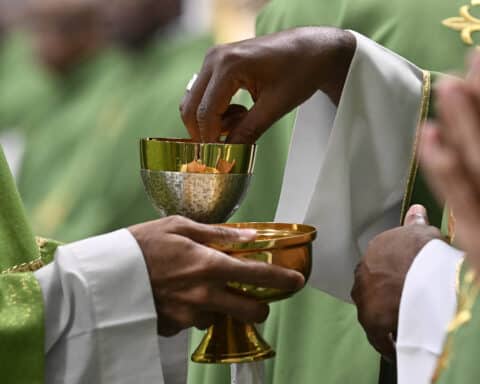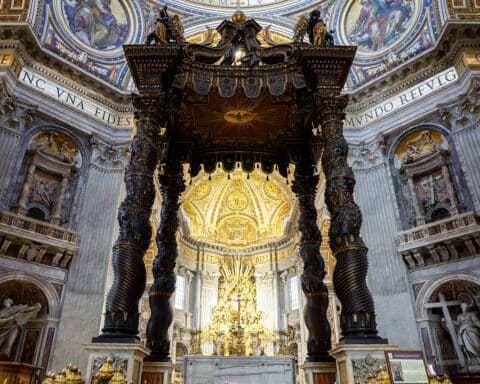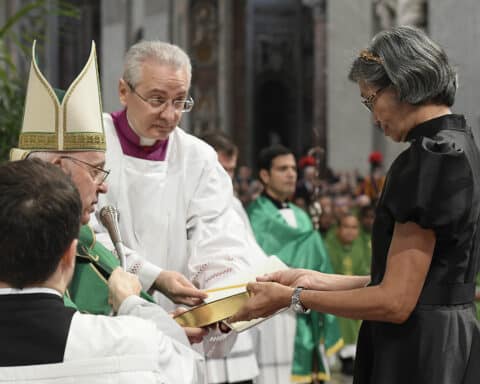
— Paul VanHoudt, Erie, Colorado
Answer: This practice originated with Pope Benedict XVI and continues in papal Masses to this day. It originated in response to concerns emerging from Mass facing the people and was offered as a compromise in the debates regarding the stance of the priest during the Eucharistic Prayer. Here are some excerpts from a Vatican document explaining the practice:
“One of the oldest signs consists in turning to the east to pray. The east is a symbol of Christ, the sun of justice. … The liturgy was not imagined primarily as a dialogue between the priest and the assembly. … The celebration of the Holy Mass ‘toward the people’ is a concept that entered to form part of the Christian mentality only in the modern age, as serious studies demonstrate and Benedict XVI confirmed: ‘T]he idea that the priest and the people in prayer must look at one another reciprocally was born only in the modern age and is completely foreign to ancient Christianity. In fact, the priest and the people do not address their prayer to one another, but together they address it to the one Lord.’
“The position of the priest ‘toward the people,’ although not obligatory, became the most common way of celebrating Mass. Things being as they are, the Holy Father proposes, also in these cases, that the old meaning of ‘oriented’ prayer not be lost and suggests that difficulties be averted by placing at the center of the altar the sign of Christ crucified. … The crosses at the center of the altars were removed as a general norm — even in the basilica of St. Peter in Rome — so as to not obstruct the view between the celebrant and the people. However, the cross on the altar is not an impediment to sight, but rather a common point of reference.
“Also made clear with this would be the distinction between the liturgy of the Word and the Eucharistic prayer. Whereas the first is about proclamation, the second has to do with community adoration in which all of us continue to be under the invitation: ‘Conversi ad Dominum‘ — let us turn toward the Lord …” (“Placing the Crucifix at the Center of the Altar,” Office for the Liturgical Celebrations of the Supreme Pontiff).
Hence, the use of a crucifix on the center of the altar, while not required, is done to orient priests and people to the Lord, rather than one another, during the Eucharistic Prayer. This is appropriate, especially at that time of the Mass. Where Mass cannot be said facing the altar for practical reasons or due to controversy, this is a proposed remedy.
One difficulty in this approach is that crucifixes are “one sided.” Hence, the image of Christ, crucified cannot be seen on both sides. This results in various “solutions.” One solution is to place a crucifix with the image of Christ crucified on both sides. Another is to simply accept the fact that the image is only on one side and turn it in one direction or the other. One opinion is to conclude that the people “outnumber” the priest and turn it toward them. Another opinion prefers turning it toward the priest since he is the principal or head of the congregation as the priest celebrant. Further, the old Mass directed the priest to raise his eyes to the cross at several moments. While this instruction is no longer prescribed or required in the Ordinary Form of the Mass, it is still a pious practice that many priests wish to observe. In many churches, there is already a large crucifix hanging over the altar or on the wall behind it. In such cases, however, the priest may not be able to see it. Hence, some priests place a cross on the altar that they can see for their own pious reflection during the Eucharistic Prayer.
As can be seen, the questions pertaining to orientation of priests and people together remain significant. How are we to regain the understanding that our worship is directed to God and is about him rather than the focus being on us? Debates about returning the priest to the ancient orientation of priest and people facing the altar together continue. Some support this, others do not. While the cross on the altar may be a compromise, as your question suggests, its meaning is not always intelligible to God’s good people.
Msgr. Charles Pope is the pastor of Holy Comforter-St. Cyprian in Washington, D.C., and writes for the Archdiocese of Washington, D.C. at blog.adw.org. Send questions to msgrpope@osv.com.

